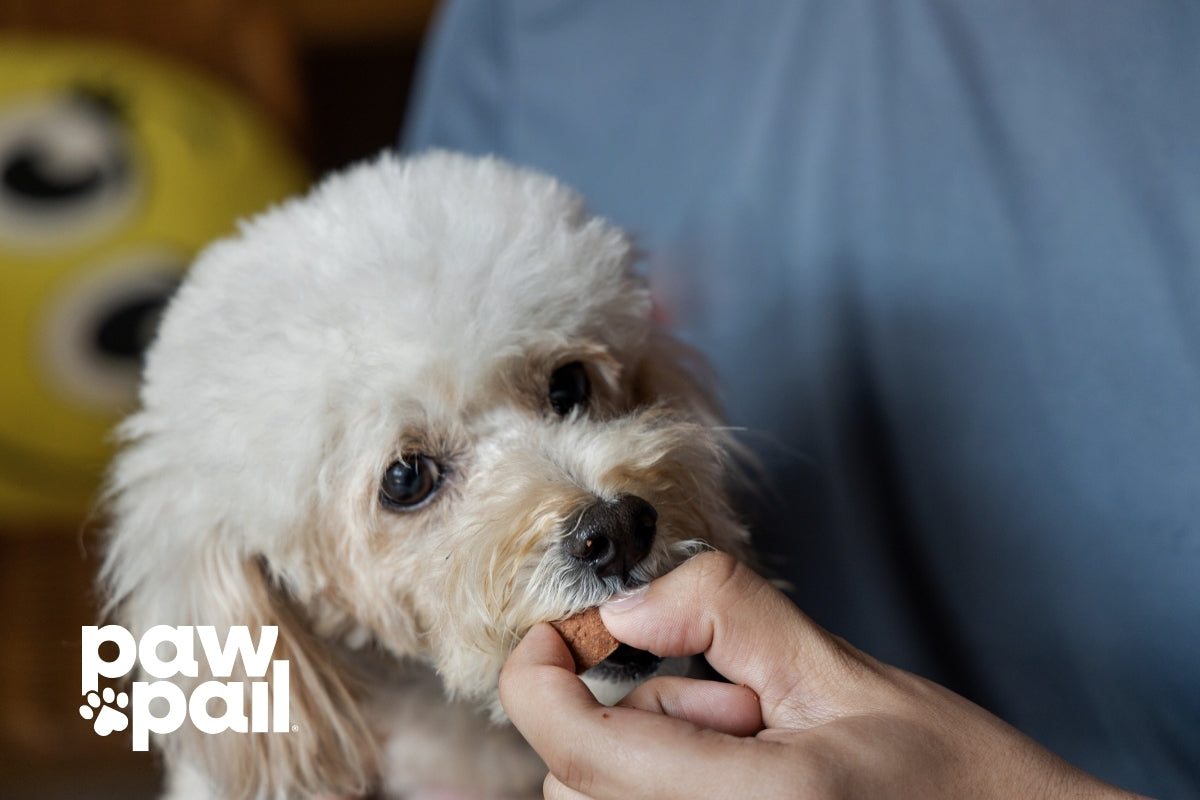Discovering white, wriggling segments or thread-like strands in your dog's stool can be a truly unsettling experience for any pet owner. While it's certainly cause for concern, it's also a surprisingly common issue that points to an internal parasitic infection.
Far from being a gross-out moment, these unwelcome guests can significantly impact your dog's health and, in some cases, even pose a risk to humans. Understanding the nature of these white parasites in dog poop, how they're contracted, the signs to watch for, and the most effective treatment strategies is the key to your canine companion's well-being.
Identifying the White Parasites
When you spot white material in your dog's poop, you're most likely encountering one of a few common culprits:
Tapeworms
Tapeworms are perhaps the most frequently observed white parasites due to their distinct appearance. These flat, segmented worms shed small, rice-grain-like segments that are filled with microscopic eggs. You might see these segments wiggling in fresh stool, around your dog's anus, or dried and stuck to their fur, resembling sesame seeds. The most common way dogs contract tapeworms is by ingesting an infected flea. During grooming, dogs inadvertently swallow fleas carrying tapeworm larvae.
Roundworms
Often described as looking like white or tan spaghetti, roundworms are arguably the most common intestinal parasites in dogs, especially puppies. They can grow several inches long. Puppies are highly susceptible, often acquiring roundworms from their mother before birth or through her milk. Older dogs can contract them by ingesting contaminated soil or feces, or by eating infected prey.
Whipworms
Whipworms are thin, thread-like worms that embed themselves in the lining of the large intestine. While it's less common to see whole whipworms in dog poop with the naked eye due to their slender nature and how they attach, a severe infestation might result in small, fine white worms in the stool. Dogs contract whipworms by ingesting microscopic eggs from contaminated soil or feces. These eggs are incredibly hardy and can survive in the environment for years.
Hookworms
Hookworms are tiny, less than an inch long, and typically not visible to the naked eye in dog stool. However, they are exceptionally dangerous due to their blood-sucking nature. While you won't see the worms themselves, their presence can be inferred from symptoms like bloody diarrhea. Dogs can become infected by ingesting eggs or larvae from contaminated soil or feces. Larvae can also penetrate the skin directly, or puppies can get them from their mother's milk.
Other White Specks
It's worth noting that not all white specks in dog poop are parasites. Sometimes, they can be undigested food like small pieces of rice, grains, or bone fragments, and in some cases, medication might not be fully absorbed and can pass through.
If your dog ingested a small piece of paper, plastic, or string, that could also appear as white specks, and rarely, yeast or fungal overgrowth can appear as white clumps.
Symptoms of Parasitic Infection
Beyond seeing worms or segments in poop, watch for scooting, weight loss despite eating, vomiting, diarrhea, a bloated belly, poor coat, lethargy, coughing, or pale gums (anemia). Early stages might show no symptoms, but these signs indicate a progressing infestation.
Diagnosis and Treatment
Do not attempt to self-diagnose or self-treat a parasitic infection. Contact your veterinarian immediately. They'll diagnose the specific parasite via a stool sample and prescribe targeted deworming medication (e.g., Praziquantel for tapeworms; Fenbendazole for others). Follow-up treatments are often necessary, and flea control is crucial for preventing tapeworm infections.
Proactive Measures for Prevention
Preventing parasites safeguards both your dog and family (some worms are zoonotic). Regular vet check-ups and deworming are crucial, especially for puppies, and are often included in monthly preventatives. Implement strict, year-round flea control for all pets to combat tapeworms.
Always promptly dispose of dog feces to prevent environmental contamination. Manage your dog's environment by deterring eating contaminated soil or rodents. Practice good hygiene, washing your hands after handling your dog. Finally, maintain clean living spaces, regularly cleaning bedding, toys, and vacuuming to eliminate eggs and larvae.
A Clean Home, A Healthy Dog
Spotting white parasites in your dog's poop is a clear signal to act. Prompt veterinary diagnosis and targeted treatment are essential to eliminate these internal pests and restore your dog's health. Beyond treatment, consistent prevention through regular deworming, strict flea control, and diligent hygiene protects your canine companion and your entire household.
Maintaining a clean environment is critical in preventing re-infestation. For effortless and odor-free disposal of dog poop, consider the PawPail. Its innovative design and odor-trapping features ensure that cleaning up becomes less of a chore, contributing to a healthier, parasite-free home.



